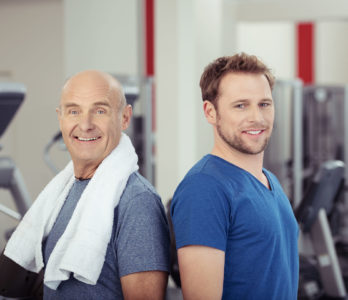 Should you fuel up before hitting the gym, or is it best to burn calories on an empty stomach? That’s the question researchers at the University of Bath in England sought to answer with their latest study.
Should you fuel up before hitting the gym, or is it best to burn calories on an empty stomach? That’s the question researchers at the University of Bath in England sought to answer with their latest study.
For their research, the team decided to look at the fat burning capabilities of exercise based on when the participant last ate. They were wondering if when a person ate influenced how much muscle fat was burned during activity, because muscle fat can be a key contributor to the eventual onset of insulin resistance and diabetes. For their study, the team divided 30 overweight men into three groups.
- A control group that lived their normal lives.
- A group that consumed a vanilla-flavored shake two hours before cycling exercise.
- A group that consumed a placebo shake two hours before cycling exercise.
Participants wore monitors and masks that tracked a number of different factors, including their heart rate and the amount of fat and sugar they burned. After exercise, the participants drank the shake they had not yet consumed (placebo for the vanilla shake group, and a vanilla shake for those who consumed a placebo before exercise).
The study lasted for six weeks, and researchers drew some interesting conclusions after looking at the data. As expected, the control group’s insulin sensitivity remained unchanged, while the men in both exercise groups improved their fitness and narrowed their waistlines, although few actually lost weight. Notably, participants who pedaled on an empty stomach burned about twice as much fat during each ride as the men who consumed their shake prior to exercise. All riders burned about the same number of calories while pedaling, but more of those calories came from fat when the men did not eat first. Riders that consumed the shake afterwards also had greater improvements in insulin sensitivity and had developed higher levels of certain proteins in their muscles that influence how well muscle cells respond to insulin and use blood sugar than the other groups.
“You can probably get more out of your workout without increasing its intensity or duration by exercising before breakfast,” said Javier Gonzalez, a professor of physiology and nutrition at the University of Bath, who oversaw the study.
So if you’re wondering when the best time to exercise is, it might be first thing in the morning after you wake up. That being said, any exercise is better than no exercise, so just get it in when it works for you!
 New research published in the Journal of Applied Physiology revealed that regular exercise can have your muscles acting as if you are decades younger than your actual age.
New research published in the Journal of Applied Physiology revealed that regular exercise can have your muscles acting as if you are decades younger than your actual age. A new study reported from the University of California – Irvine in the Proceedings of the National Academy of Sciences revealed that even
A new study reported from the University of California – Irvine in the Proceedings of the National Academy of Sciences revealed that even  Exercise isn’t just a way to stay in shape or calm inflammation, it also has enormous benefits for our overall health. In fact, new research shows that it doesn’t really matter whether your walk or run, so long as you are getting regular exercise.
Exercise isn’t just a way to stay in shape or calm inflammation, it also has enormous benefits for our overall health. In fact, new research shows that it doesn’t really matter whether your walk or run, so long as you are getting regular exercise.